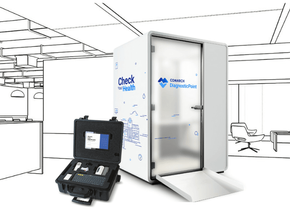Cloud: agility, flexibility and customisation in insurance

It can be easy to underestimate the importance of cloud technology when considering the modern insurance industry. Making it easier for startups and new InsurTechs to compete on a level playing ground with incumbents and traditional financial institutions, cloud mitigates the need for cumbersome legacy infrastructure and allows a company to remain agile, adaptable to contemporary challenges and offer customers a more intuitive experience. To find out more about how cloud platforms are enabling genuinely transformative results for insurers, we spoke with executives from two leading California-based tech companies: Keith Stonell, Managing Director EMEA at Guidewire Software and Colin Fernandes, Product Marketing Director EMEA at Sumo Logic.
Meeting industry challenges
For both Stonell and Fernandes one thing is very apparent: COVID-19 has been an accelerator or catalyst for technological change that had been nascent in the insurance industry beforehand. “The pandemic has certainly exacerbated issues relating to cybersecurity, business continuity, cost management, capacity optimisation and re-prioritising to competitiveness,” says Fernandes. More than ever, insurers need dynamic control in order to scale appropriately in relation to modern challenges. The flexibility and precision of cloud to facilitate this makes it an obvious choice over legacy systems; investing in a proven platform eliminates the need to ‘reinvent the wheel’ and instead provide a readymade framework upon which the company’s main focus (i.e. customer experience) can take centre stage. “Nowadays, IT still has to spend 50%+ of its budget and resources on maintenance for existing systems rather than digital innovation and is often limited to providing only the necessary level of IT agility,” adds Stonell. “Increased IT agility which goes above and beyond basic requirements will allow IT to act more as an innovation partner for the business.”
Stonell claims that the benefits of cloud overall extend past streamlining current operations, which are likely to be tested thoroughly by COVID-19-related insurance activity, but also include empowering insurers to meet the ever-changing needs of policyholders in the future. Fernandes concurs, saying, “Companies that adopted cloud technologies early on are now better positioned to ask themselves, ‘how can we rejuvenate and transform our business?’ or ‘what products, services and use cases can we leverage for a greater customer experience safely in a highly regulated world?’” Indeed, it would appear that the pandemic has signalled to those getting left behind in terms of digital transformation to reset their priorities.
Cloud: driving value, competition and tech utilisation
Far from being a tech novelty or something reserved for ‘greenfield projects’ and startups, Stonell notes that cloud has become part of insurance companies’ core systems over the last few years. Whilst gaps in IT have previously hampered achieving optimal levels of service “the migration to a cloud platform offers a meaningful and sustainable solution.” This is rooted in the cloud’s ability to consolidate multiple data streams into one easily navigable framework, one which eliminates the complexities, restrictions and logistical difficulties caused by prior methods. Fernandes adds: “The ability to securely collect, index, search, analyse, enrich, correlate and visualise across complex workloads requires centralisation of trusted, accurate and actionable intelligence to respond quickly and remain compliant within a highly regulated industry like insurance.”
However, just because cloud platforms provide distinct advantages in terms of driving value, competition and tech utilisation, this isn’t to say that intelligent planning and analysis isn’t required prior to adoption. “An awful lot of their business processes still run on traditional or legacy hardware, with complex integrations and out-of-date (“cloud washed”) software,” states Fernandes. “Replacing those systems with cloud is not an overnight process; it requires a progressive, modern appetite combined with a mindset and culture centred on innovation.” Exploring the available options of public cloud, private cloud, hybrid cloud and multi-cloud will reveal unique benefits, with each capable of driving significant digital transformation within the correct company framework. Stonell advises all insurers to weigh their options quickly as the industry adopts the technology en masse; IoT (internet of things - remote equipment useful for providing insurers with real-time streams of data manageable by cloud) project expenditure, by his estimate, will reach USD$1.1trn by 2023. “The ‘cloud now’ hype is on much the same trajectory as before the pandemic, but the need for acceleration is greater than ever.”
Augmenting cloud for insurance processes
As a data-rich and data-drive industry, insurance has the potential to be significantly improved by technology which unlocks the value of its voluminous data streams. This is why combining cloud with IoT and analytical software can be positively revolutionary in an insurer’s digital transformation journey. Also a key component of the ‘race to innovate’, Stonell considers artificial intelligence (AI), machine learning (ML) and other analytical capabilities to offer companies “not only the chance to modernise but to accelerate innovation and offer new products and services that satisfy, or even exceed, customer expectation.” For instance, wearable IoT sensors could help health insurers to get more accurate information on their customers and therefore enable them to offer better products, customise their packages more easily and lower premiums. Cloud is the underlying tech resource which makes this kind of data utilisation possible and unlocks value that was simply inaccessible before: “Not all data is equal, but all data is valuable,” comments Fernandes. “For instance, you can monitor application changes and manage customer satisfaction in real-time. That direct link between IT, modern applications and customer personalisation and can be correlated and applied to a company’s advantage.”
Future development of cloud
Even though COVID-19 has already instigated some rapid changes in the insurance sector, Fernandes is of the opinion that momentum for further development will carry on unabated in the ‘new normal’. “I think the insurance sector, as a whole, will face the same economic and financial disruption and pressures across the world. At the same time, I expect to see more insurance firms making use of offerings like serverless, microservices, APIs (application programming interfaces) and containers to run their infrastructure over time.” It could be concluded, then, that cloud will be a crucial part of the cultural transformation that is likely to mould the industry’s mindset for the foreseeable future. Stonell has a similar vision for cloud’s future development: “Open APIs will empower the wider ecosystem to grow, innovate, add further value, develop the potential for carrier-led coinsurance and peer-to-peer settlement.” The future of insurance, therefore, could be far more open and customisable than previously thought possible, ushering in a far more 21st-century experience. “Cloud-hosted, modern software platforms can enable greater customisation and flexibility and can be adapted to encompass unique processes, such as those used in the London Market,” Stonell concludes. “This creates an accessible marketplace that’s comparable to an app store, which could be the next step for optimising value.”






